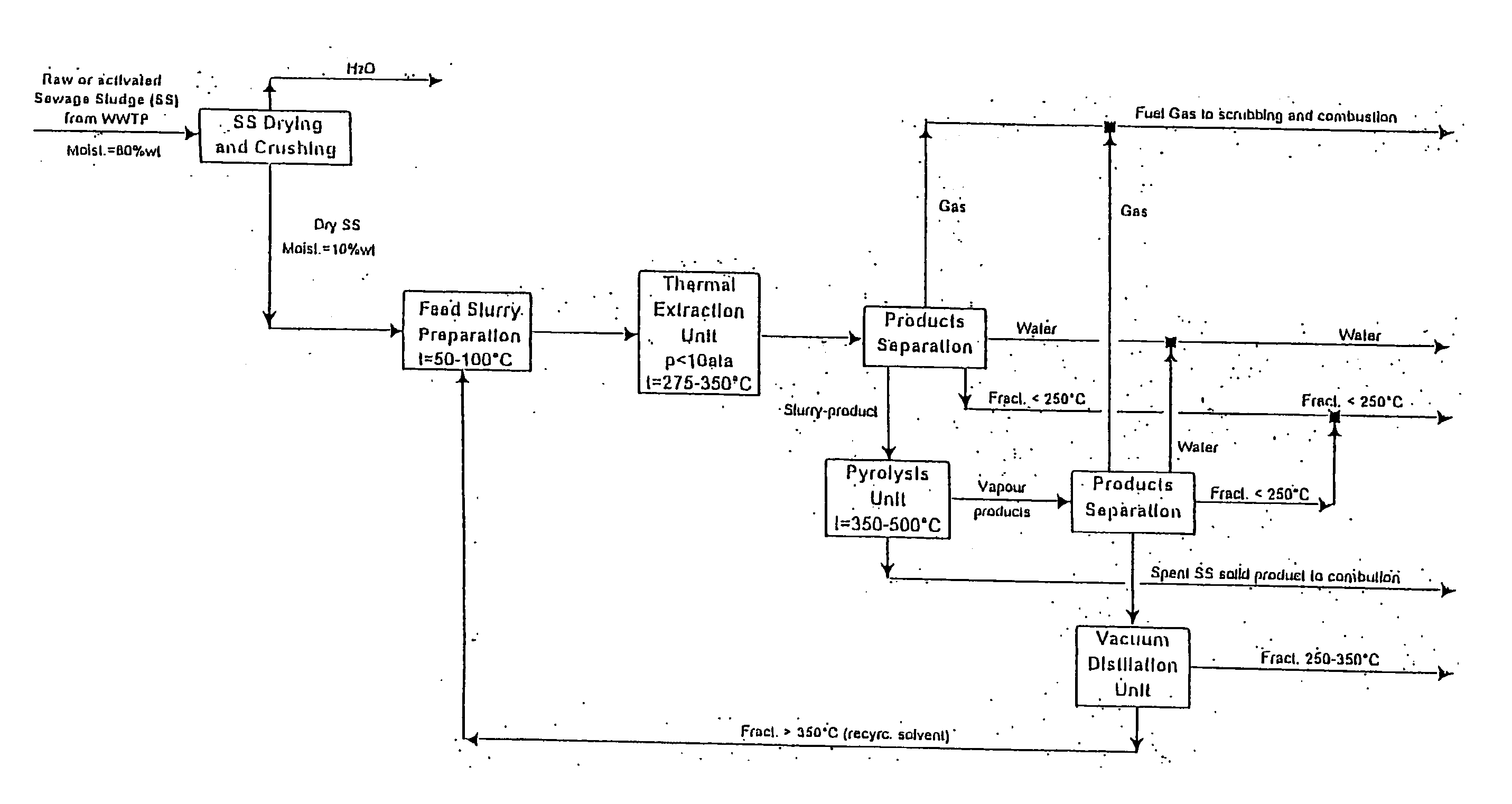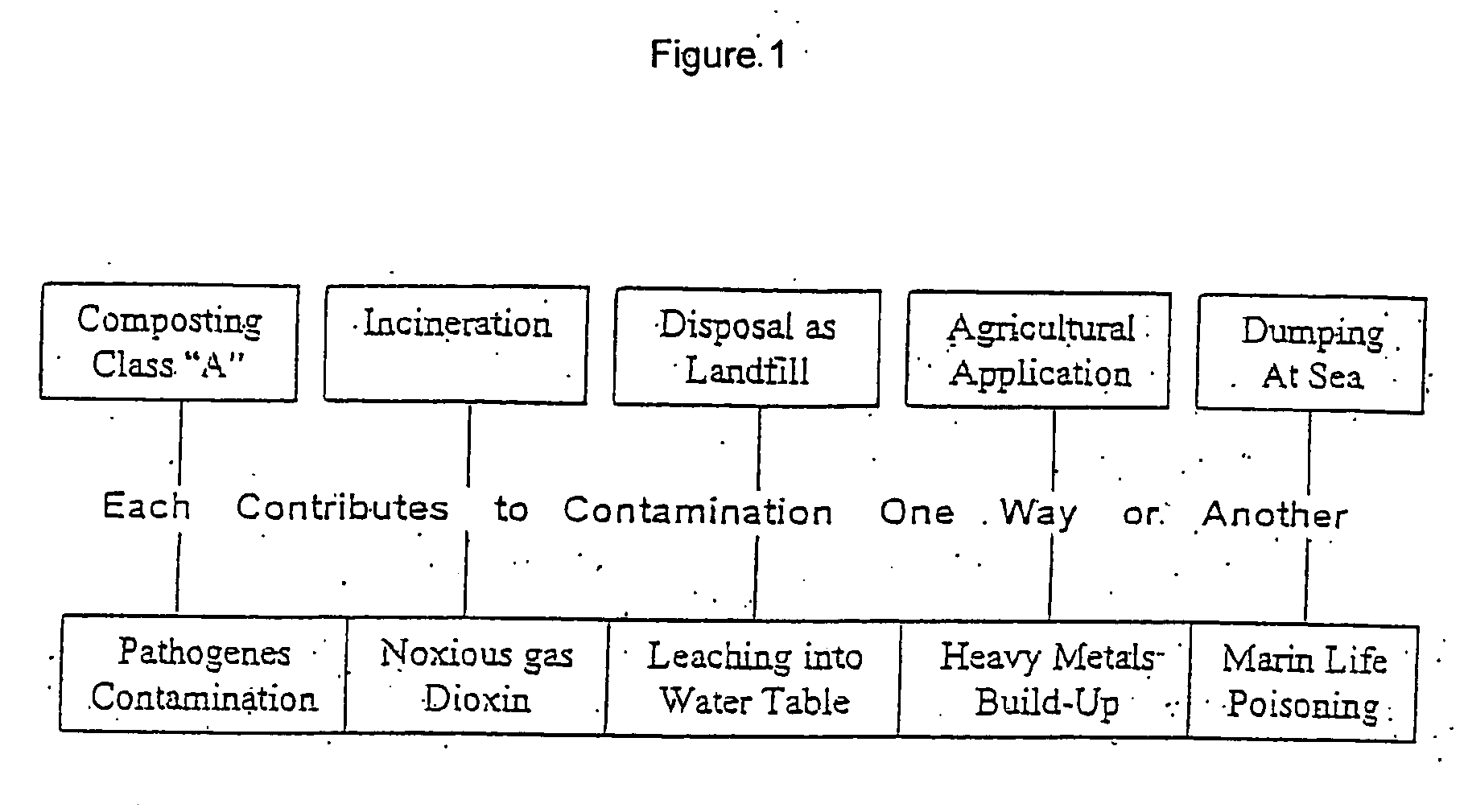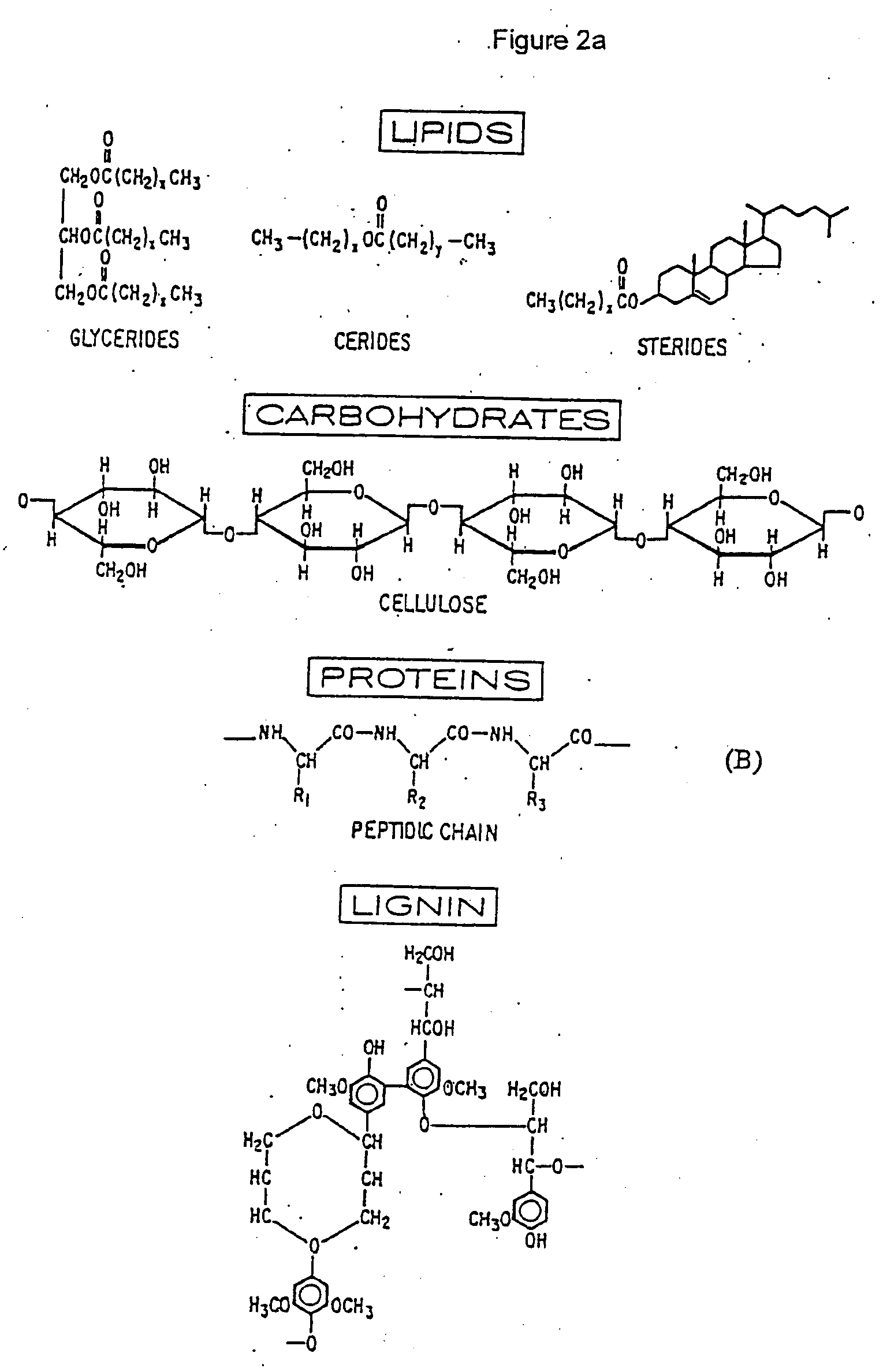Process for treatment of organic waste
a technology for organic waste and processing, applied in the direction of organic chemistry, chemical apparatus and processes, physical/chemical process catalysts, etc., can solve the problems of high toxic materials such as industrial solvents, heavy metals, even nuclear waste to be left behind in sludge, contaminating soil and subsequently ground water, and even alive, etc., to achieve the effect of increasing the yield of light and medium fractions of oil and gas
- Summary
- Abstract
- Description
- Claims
- Application Information
AI Technical Summary
Benefits of technology
Problems solved by technology
Method used
Image
Examples
Embodiment Construction
[0057] For purposes of this invention sewage sludge liquefaction is conducted in two separate stages: the first stage is thermal extraction in a recirculating solvent medium wherein said solvent performs several functions:
[0058] Formation of slurry, which facilitates the pumping of the feed stock through the apparatus;
[0059] Improvement of the heat transfer from the heating agent to the feed stock;
[0060] Hydrogen donation in order to recombine the radical fragments formed during the thermal destruction of organic molecules in the feed stock;
[0061] Dissolution of the resulting fragments in the liquefaction medium.
[0062] The presence of the recirculating solvent thus makes for a higher yield of liquid products compared with the processes of pyrolysis known in the literature (see previous section), and for a lower temperature of the treatment (pyrolysis at 4500 C-5500 C, thermal extraction at 2500 C-3500 C for sewage sludge).
[0063] The slurry product obtained at the first stage a...
PUM
| Property | Measurement | Unit |
|---|---|---|
| pressure | aaaaa | aaaaa |
| temperature | aaaaa | aaaaa |
| boiling temperature | aaaaa | aaaaa |
Abstract
Description
Claims
Application Information
 Login to View More
Login to View More - R&D
- Intellectual Property
- Life Sciences
- Materials
- Tech Scout
- Unparalleled Data Quality
- Higher Quality Content
- 60% Fewer Hallucinations
Browse by: Latest US Patents, China's latest patents, Technical Efficacy Thesaurus, Application Domain, Technology Topic, Popular Technical Reports.
© 2025 PatSnap. All rights reserved.Legal|Privacy policy|Modern Slavery Act Transparency Statement|Sitemap|About US| Contact US: help@patsnap.com



